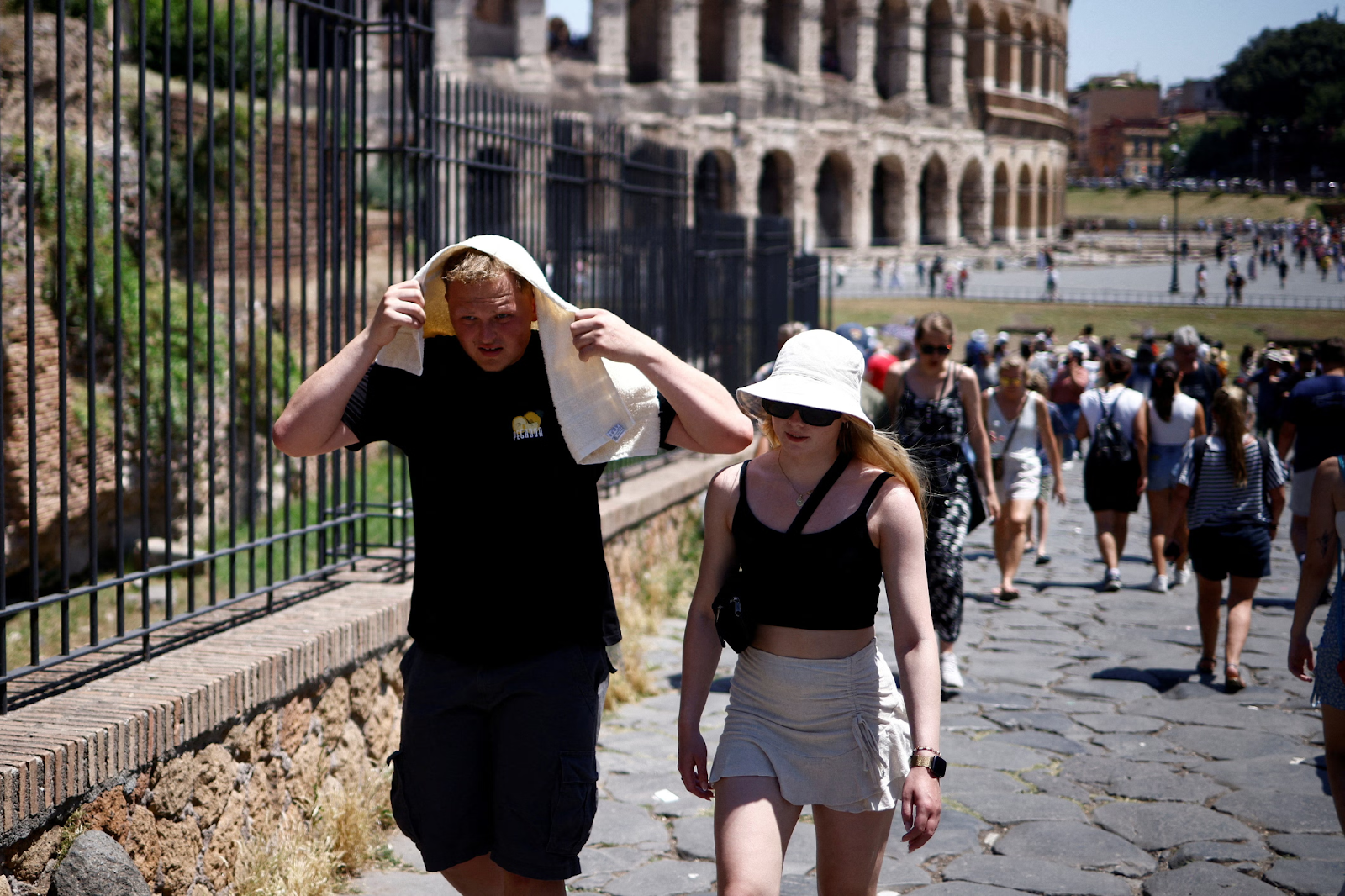As the excessive heat continues to afflict southern Europe, red alerts have been issued for 15 towns around Italy. The warnings, which point out risks even for healthy persons, are applicable for the upcoming days to popular tourist destinations including Rome, Florence, and Bologna.
The next week, when another heat wave approaches, Europe might see temperatures that break records. The Italian, Spanish, French, German, and Polish regions may see harsh weather, according to the European Space Agency (ESA). The ESA monitors the ocean and land temperatures with the help of its satellites.
Sicily, where 48.8C was the highest temperature ever recorded in Europe, had comparable temperatures this week, according to projections. Natural weather patterns include hot spells, but due to global warming, they are occurring more frequently, are more powerful, and are staying longer.
Anyone in the areas affected by Saturday’s red alerts has been urged by the Italian government to stay out of direct sunlight between 11:00 and 18:00, and to take extra precautions with the elderly and weak.

Europeans seek shade as heatwave grips much of the continent (Credits: Reuters)
Heatwave affecting different cities in Europe
At least 40C (104F) temperatures have lately been recorded in Greece. The most popular tourist attraction in the country, the Acropolis, was closed on Friday during the hottest part of the day to protect visitors.
In addition, there are concerns about an increased risk of wildfires across the country, especially in areas with strong winds. Significant wildfires occurred there in 2021 during yet another hot summer. Poland and Germany are among the countries in Central Europe that have been affected by the high temperatures. The weekend’s maximum temperatures, which would be exceptionally high for the country at 38C, could occur, according to a warning from the Czech meteorological office.
But on Saturday, it’s expected to rain heavily and be windy in certain parts of England. The southern movement of the jet stream, which was causing hot weather in Europe and bringing unsettled, cooler weather, was to blame for this, according to meteorologists, as it drew low-pressure systems into the UK.
The three-headed monster from Dante’s Inferno, called Cerberus by the Italian Meteorological Society, is the source of the heatwave.
Italian weather forecasters predict that the following heatwave, known as Charon after the ferryman in Greek mythology who carried souls to the underworld, will push temperatures again beyond 40C the following week. Furthermore, heat waves are occurring in several areas of the US, China, North Africa, and Japan.

On Friday in Athens, Hellenic Red Cross volunteers distributed water bottles (Credits: Reuters)
The Acropolis will be closed on Friday from noon to seven o’clock (9 o’clock to fourteen o’clock GMT), according to the Greek Ministry of Culture, who also indicated that similar actions would probably be taken on Saturday.
Since there is minimal shade where the complex is located on a rocky hilltop, it is frequently hotter there than in the neighborhood. A visitor who had been ill from the heat earlier on Friday was taken away by stretcher, according to the local police.
The Acropolis and other tourist attractions nearby the Sacred Rock were open all day. Greek Red Cross volunteers have been on the ground lately to distribute water bottles and aid those who are feeling queasy and lightheaded due to the heat.
A minimum of two liters of water should be consumed every day, and dehydrating things like alcohol and coffee should be avoided. The warmest June on record occurred last month, according to the EU’s Copernicus climate monitoring system. Extreme weather resulting from a changing climate is, the World Meteorological Organisation (WMO) has warned, “unfortunately becoming the new normal.”













